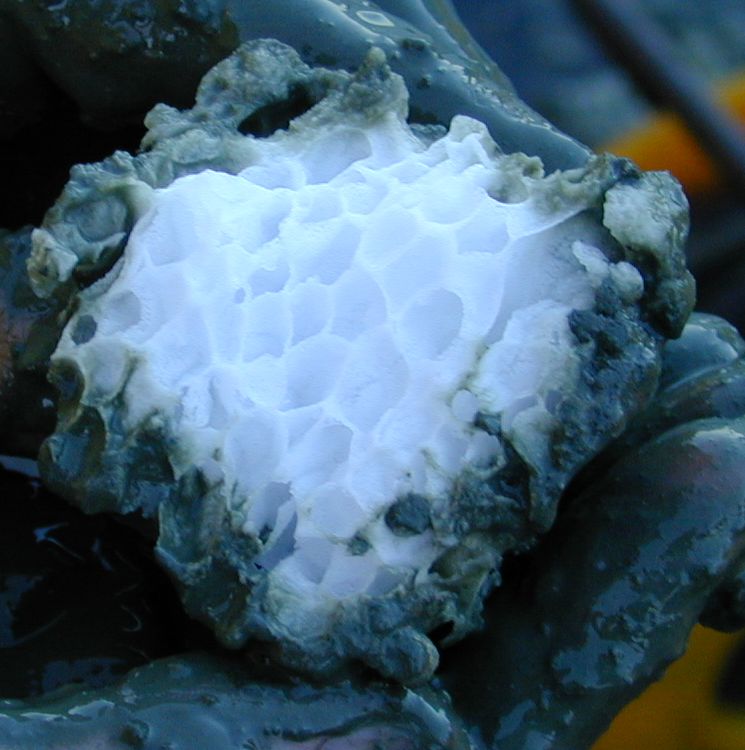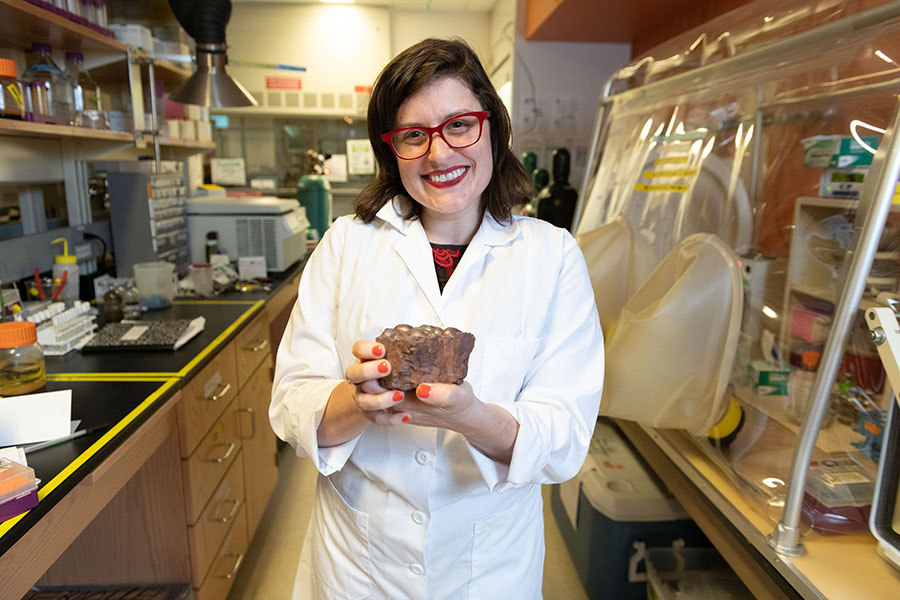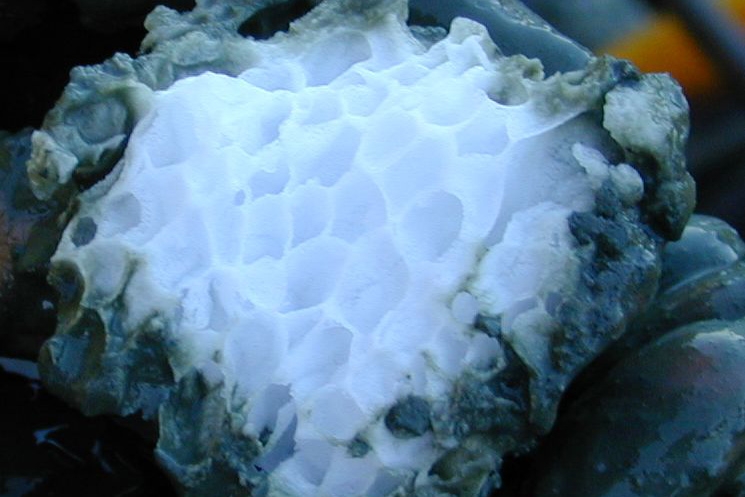 Structure of a methane clathrate block found embedded in sediment in the subduction zone off Oregon’s coast. A German research ship found this hydrate roughly 4,000 feet below the ocean’s surface in the top layer of the ocean floor. (Photo Courtesy: Wusel007 via Wikimedia Commons) |
By Renay San Miguel, College of Sciences
Trillions of cubic feet of natural gas are thought to lie in cold storage within Earth’s permafrost and under its oceans. That gas, however, is trapped within cage-like chemical structures called methane clathrates. Scientists are very interested in these structures, because they may have cousins hidden under the surface of the icy moons in the outer solar system.
Whether the clathrates are on Earth or the Jovian moon Europa, science wants to know: What role did microbes play in their formation and stability? How are they involved when Earthbound clathrates start deteriorating, releasing this greenhouse methane gas into an already warming global atmosphere? Is that process underway millions of miles from Earth?
An interdisciplinary team of Georgia Tech geo-microbiologists, biochemists, and geo-engineers will have a chance to answer those questions, thanks to a project getting underway this month with support from the NASA Exobiology Program. Its heady title? “Microbial Interactions with Methane Clathrate: Implications for Habitability of Icy Moons.” The investigators will search for DNA blueprints of potential clathrate-binding proteins, reproduce those proteins in a laboratory, and test their impact on methane clathrate properties.
 Dai |
 Glass |
“This is a truly interdisciplinary project to understand how microbial life survives in methane clathrates under the seafloor,” said Jennifer Glass, assistant professor in the School of Earth and Atmospheric Sciences and the team’s principal investigator.
“These deep microbes encode genes that are different from any found on the Earth's surface,” Glass said. “This grant will be one of the first efforts to study the biochemistry of these new biomolecules, and how they affect the structure and properties of methane clathrate. This research is only possible because our Georgia Tech team is uniquely working at the interface between microbial ecology, biochemistry, and geoengineering."
Glass will work with scientists in Tech’s School of Chemistry and Biochemistry as well as Sheng Dai, an assistant professor in the School of Civil and Environmental Engineering. Dai has long studied sediments from deep beneath the seafloor that have trapped methane hydrate crystals. His lab has one-of-a-kind tools to maintain the enormous pressures of samples collected under thousands of meters of water and soil.
“Back in 2015, we found viable cells in deep-sea sediments from the Nankai Trough in Japan,” Dai said. “It was an eye-opening for me see these biologically active sediments. We have focused on fundamental physical properties of hydrate-bearing sediments over the past decade, but never had the chance to look into their biological behavior.
“This project gives us the opportunity to unravel microbial survival strategies at extreme conditions, understand the roles of microbes in the fate methane in hydrate reservoirs, and expands our research capability.”
The methane clathrates that are the subject of this new project are lattice-like structures made of a solid similar to ice. They are buried in polar permafrost and under the world’s oceans, and scientists believe they could hold anywhere from 100,000 to 1 million trillion cubic feet of natural gas. The gas molecules are trapped inside the crystalline structures, but large-scale commercial extraction isn’t available yet. However, plumes of methane have been recorded leaking from Arctic permafrost thanks to global warming. (Methane is already produced via decaying organic matter in landfills, traditional oil and gas exploration, and within the stomachs of domestic livestock.)
Visits from planetary probes, spectroscopy readings, and other research indicate that methane clathrates may exist on the icy moons of Jupiter and Saturn. They may be part of developing ecosystems. Did microbes interact with those clathrates? Could they be tapped in the search for life in the solar system? Could those gas resources help sustain human habitats on the Jovian moon Europa?
"We are excited to learn more about the fascinating molecules that bind methane ice in this unique environmental niche,” said Raquel Lieberman, professor in the School of Chemistry and Biochemistry and another of the team members. “These proteins don’t look like any others known in temperate environments."
With Abbie Johnson, a Ph.D. student in the ocean science and engineering program, Dai will work to understand how the hydrate crystallizes in high-pressure environments and the proteins involved. He’s also responsible for recreating deep-sea pressure and temperature conditions in the lab.
“We’ll design a high-pressure chamber with see-through capability to allow for forming methane hydrate in the laboratory,” Dai said. “Then, we’ll be able to directly visualize the hydrate crystallization process using high-resolution cameras under high-pressure.”
Related

